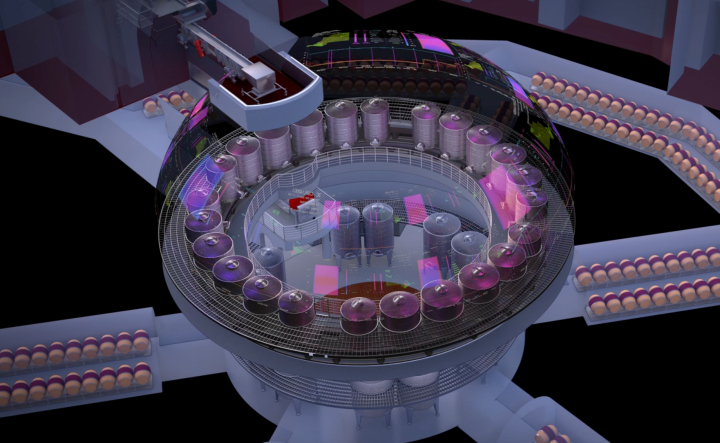

The tricky part of making wine (one of many, I suppose), is exercising control over yeast, which tends to be very finnicky. Slight fluctuations in temperature can throw everything off, and sometimes, it takes far too long to catch the mistake. But Palmaz has found a tech-forward solution, employing a very special Fermentation Intelligence Logic Control System that maintains incredibly close tabs on the molecular construct of its wine. With extensive monitoring and data, the winemakers are able to keep temperatures precise at even the most minute levels across various parts of the tank, which in turn gives them incredible control over the yeast and its fermentation.
Within each tank is a probe that resembles a tuning fork, which actually measures the vibrations within the liquid 10 times every second. This gives the Palmaz Winery incomparable amounts of data about its product’s density, and by extension, sugar, and alcohol levels and rates of fermentation.
All of this information is then displayed by a projector onto the domed ceiling of the Palmaz fermentation cave, creating an impressive series of charts and graphs that provides all the information you could ever need to know about your wine and its progress. And best of all, the associated geotagging software with the Fermentation Intelligence Logic Control System allows the tank to determine who is standing in front of them, so as Wired notes, “the projections a particular winemaker is working on follow them around.”
It’s all in an effort to create the best wine possible for you, the consumer. So the next time you’re enjoying that marvelous cabernet, just consider all the submarine technology that went into it.


